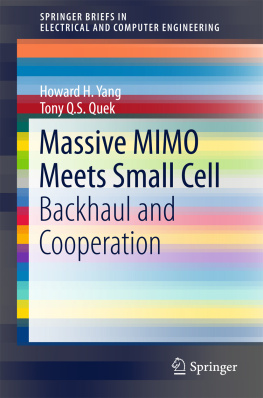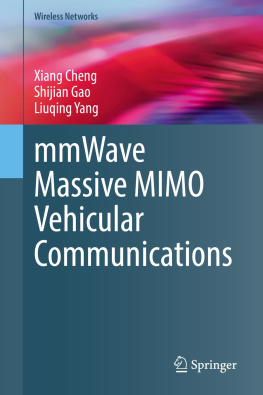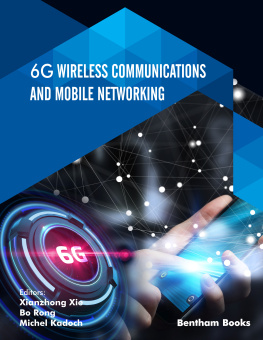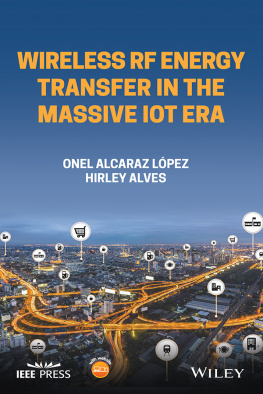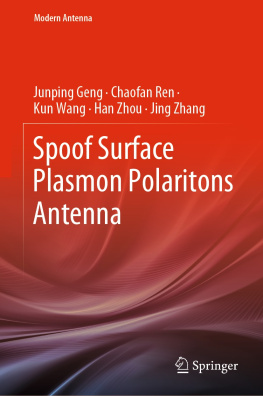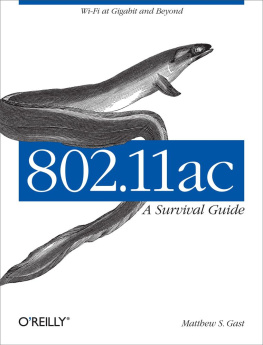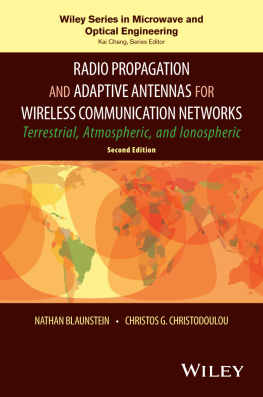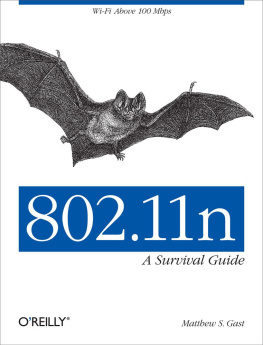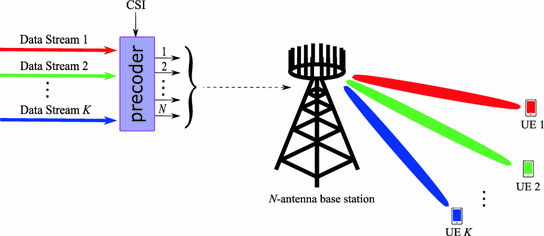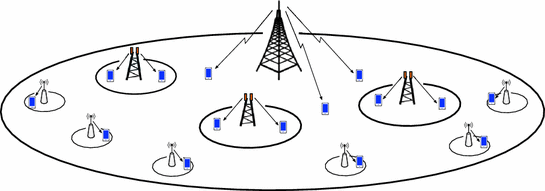1.1 Background
Driven by new generation of wireless devices and the proliferation of bandwidth-intensive applications, user data traffic and the corresponding network load are increasing in an exponential manner, leading challenges in wireless industry to support higher data rates and ensure a consistent quality of service (QoS) throughout the network. To address this challenge, it requires network capacity to be increased by a factor of thousand over next ten years. Since spectral resources are scarce, there is a broad consensus to achieve this through network densification, i.e., deploying more antennas per unit area into the network.
In general, there are two approaches to densify the network []. To this end, we first detail the concept of massive MIMO and small cell networks and then outline our contributions in this book that improve energy efficiency, coverage, and cell-edge user rate.
Fig. 1.1
Example of a downlink massive MIMO system, where base station antenna number N is orders larger than the number of UEs K . Data streams are simultaneously transmitted to all UEs in the cell
1.1.1 Massive MIMO System
Massive MIMO is a form of multi-user MIMO where BS deploys an antenna array with hundreds of active elements to serve tens of active UEs in the same timefrequency resource block []. In this regard, massive MIMO enables each of its UEs to enjoy a wireless channel that has high power gain and small crosstalk.
Several nice properties emerge when MIMO array are made large, which are summarized as follows:
The vast number of antenna elements enable BS using simple linear precoding/decoding schemes, such as maximum ratio transmission (MRT) or zero forcing (ZF), to achieve the optimal channel capacity [].
The action of the law of large numbers smoothens out frequency dependencies in the channel, which enables an easy design of power control to improve spectral efficiency without regarding the short term fading channels [].
The large antenna array allows BS to concentrate its transmit power at the receivers by forming narrow beams. In this way, radiated power at BS can also be significantly reduced [].
Besides, massive MIMO also has many potential trails as reducing latency on the air interface, simplifies the multiple access layer, and increases the system robustness [].
While very promising, massive MIMO still presents a number of research challenges. For instance, since coherence time of a wireless channel is naturally finite, there are only limited amount of orthogonal pilot sequences that can be assigned to devices for acquiring channel knowledge. Consequently, these pilot sequences have to be reused for all cells in the network, which inevitably contaminates the estimated channel, resulting in a crucial limitation to the system performance []. In this book, by elaborating the high number of antennas at base stations, we propose a scheme that can coordinate the inter-cell interference without the need for orthogonalizing resources over time or frequency.
1.1.2 Small Cell Networks
On a separate track, modern wireless devices, such as smartphones, tablets and laptops, are generating more indoor traffic than outdoor, leading to an inhomogeneous data demand across the entire network. However, the conventional cellular networks are designed to cover large areas and optimized under homogeneous traffic profile, thus facing the challenge to meet such unbalanced traffic profile from different geographical areas [].
By deploying a large amount of lower power network nodes that covers a small area, traffic from macrocells can be offloaded to small access points which located in shorter distance to the end UEs. In this regard, small cell network has the advantage to not only improve the indoor coverage, but also boost the spectral efficiency per unit area via spatial reuse [].
Fig. 1.2
Example of a small cell network consists of macrocell, pico cells, and femto cells. Different type of cells serve different amount of UEs
A typical architecture of small cell network is illustrated in Fig. ]:
Macrocell base stations, which are conventionally installed by operators to provide open public access. These base stations are usually destined to provide a guaranteed minimum data rate under limited delay constraint and maximum tolerable outage. They typically emit up to 46 dBm, covering a wide area on the order of few kilometers and serving thousands of customers.
Pico cell access points, which are operator-installed low power cell towers. Pico cells are mainly deployed in places that have insufficient macro penetration, with the purpose to infill the outdoor or indoor coverage. Their transmit power generally range from 2330 dBm, providing a coverage area around 300 m and serving a few tens of users.
Femto cell access points, which are user-deployed access points. Femto cells are usually low cost and operating with low power, they are commonly used to offload data traffic and serve a dozen of active users in homes or enterprises. Typically, the coverage range of femto cell is less than 50 m and the transmit power is less than 23 dBm.
Small cell networks entail a shift of paradigm over the traditional cellular network, where centralized macrocells are divided into more autonomous, uncoordinated, and intelligent small cells. Though such paradigm shift provides excellent opportunities for network enhancement, several challenges also comes along. For instance, the interference alignment in co-channel deployment and hand over between different cells all act as a key limiting factor for capacity []. Inspired by the large spatial dimensions in massive MIMO, we propose equipping macrocell base stations with large antenna arrays in a small cell network. In this sense, the tremendous diversity gain brings good opportunity for wireless backhaul in small cell network, where macro base stations have dedicated backhaul to the core network, while small access points can aggregate their traffic, and send to their closest macro base stations via wireless link. In this book, we will investigate an energy efficient design to such small cell network with wireless backhaul.
1.2 Book Outline
In the following two chapters, we mainly discuss two approaches of using the large antenna arrays, i.e., interference suppression at cell edge and wireless backhaul in small cell networks, to improve network performance.

